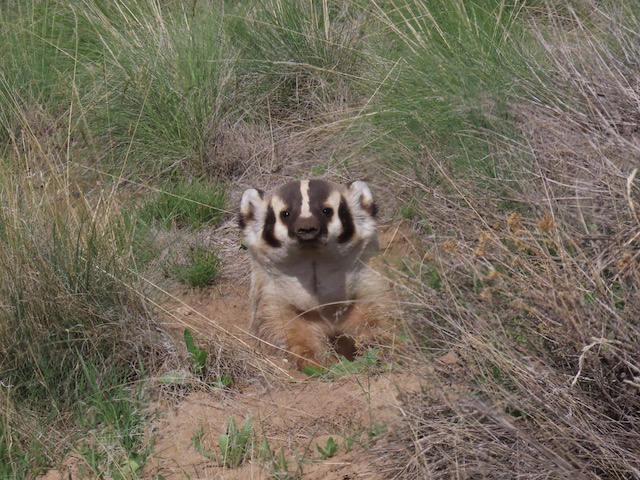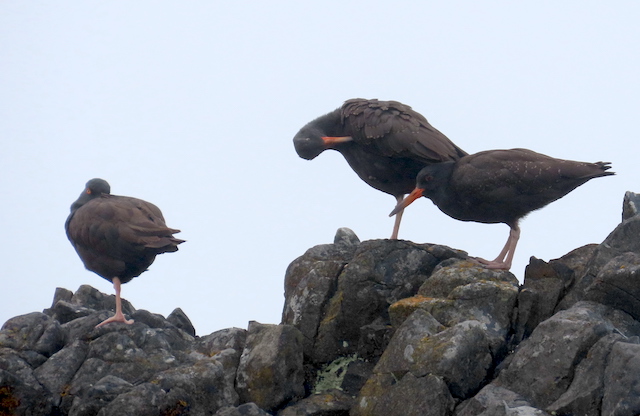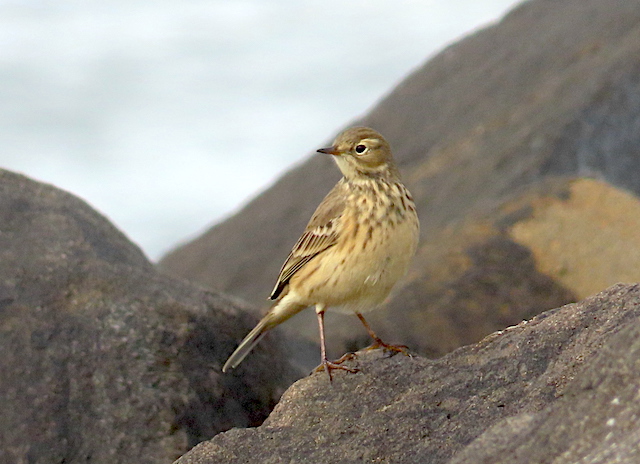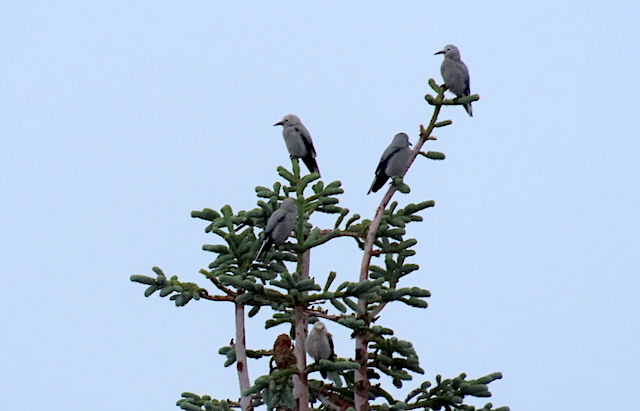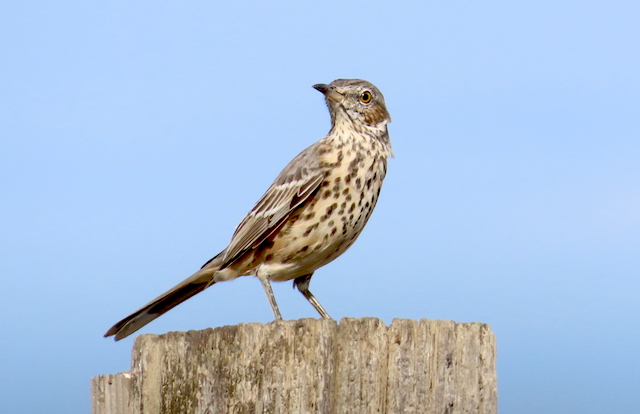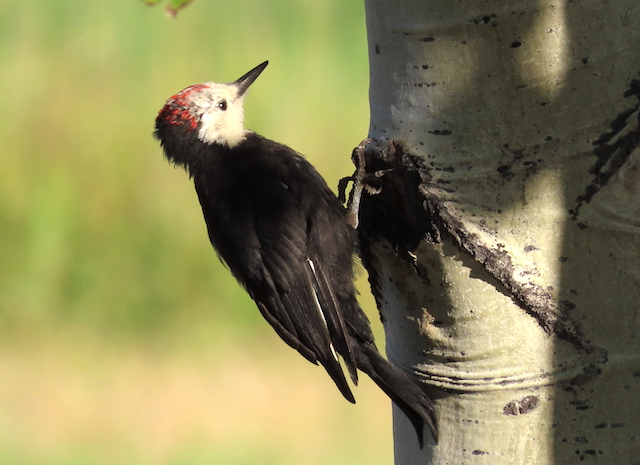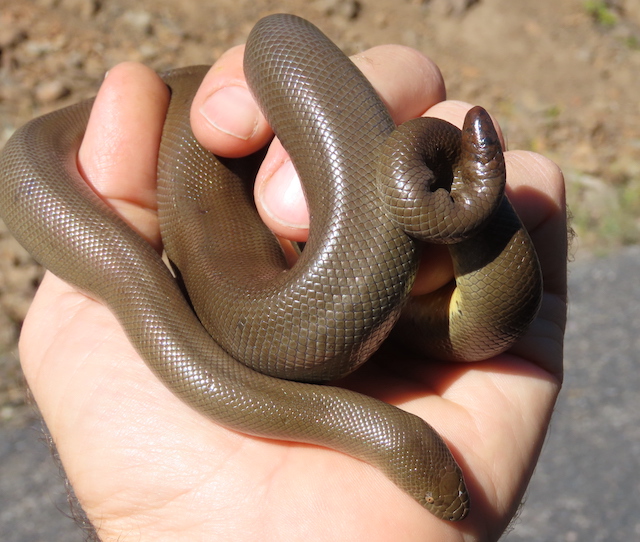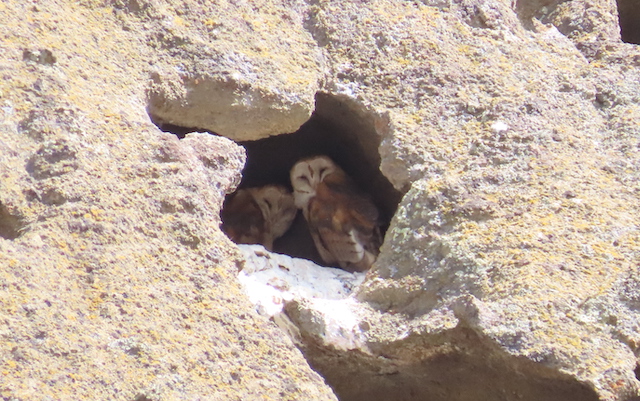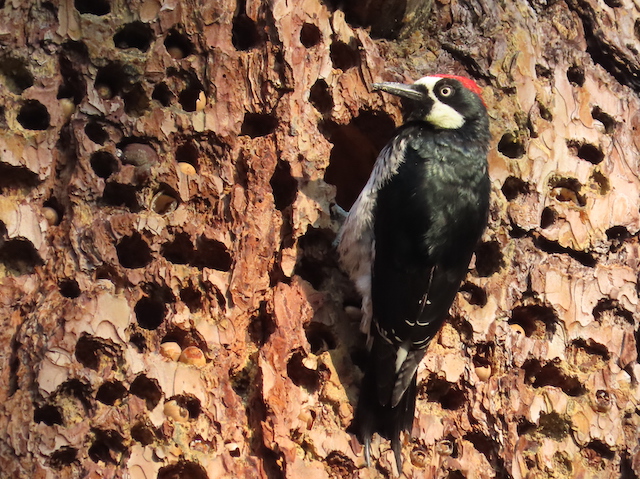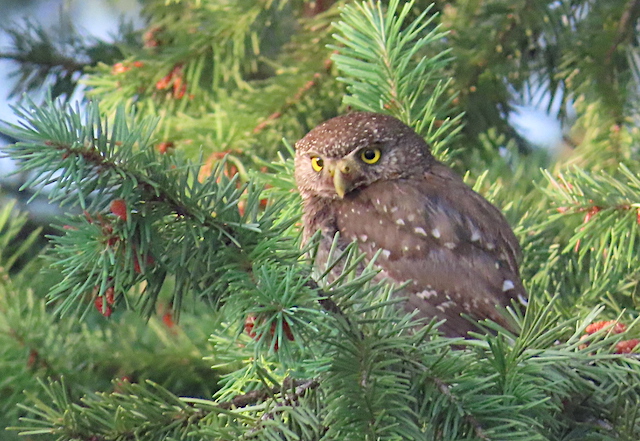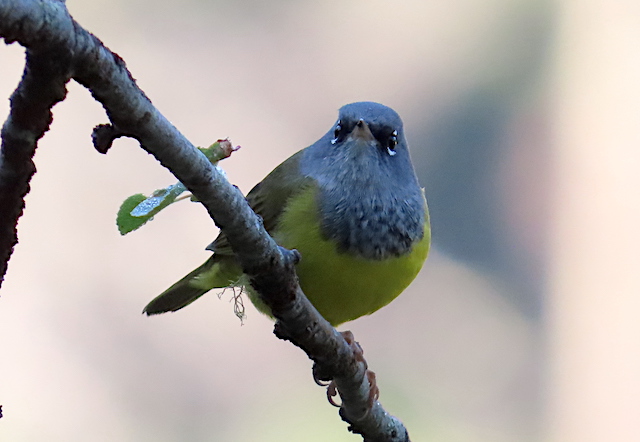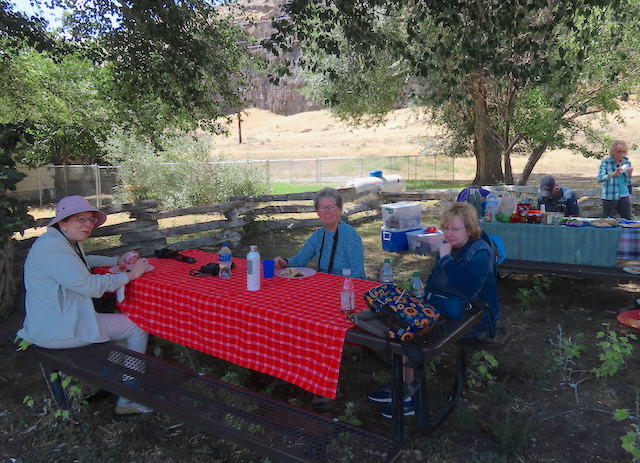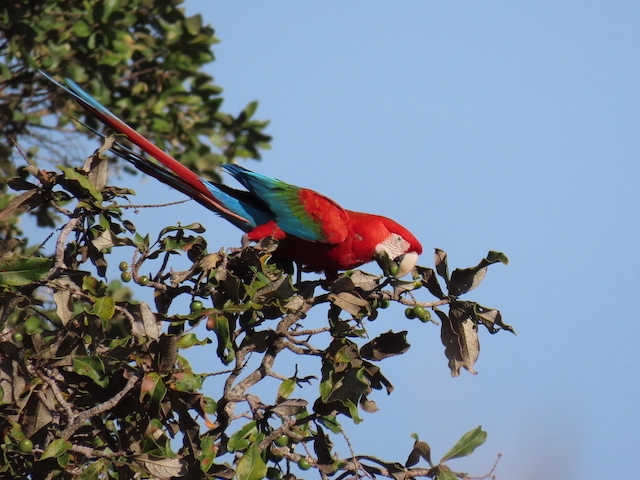From the Field
October 17:
Steve Howell reports from our recent tour to Veracruz, Mexico, where migration truly was a moving experience.
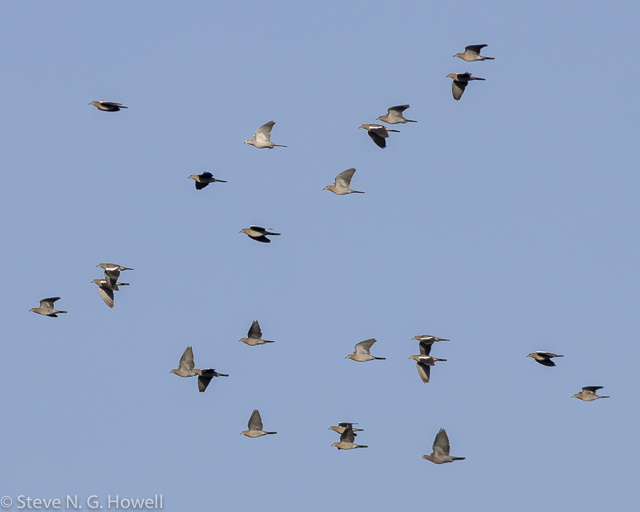
The very first morning we watched thousands of White-winged Doves heading over southward—here a small group ‘carrying’ single Eurasian Collared Dove and Red-billed Pigeon (can you spot them?)
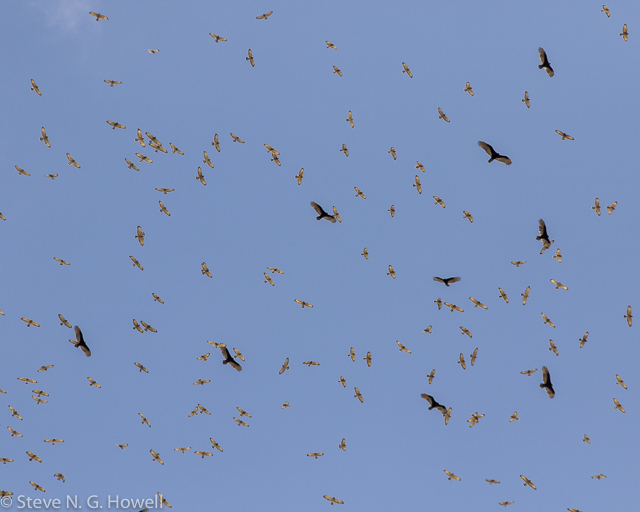
And then we stepped into the deep end of the world-famous ‘River of Raptors’ on a day when 220,000 (!) Broad-winged Hawks were tallied! Here, just a fraction of the spectacle...
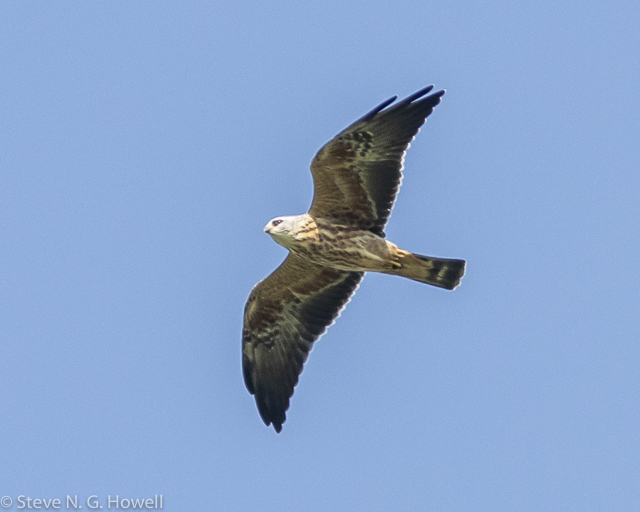
And here a pleasingly low juvenile Mississippi Kite
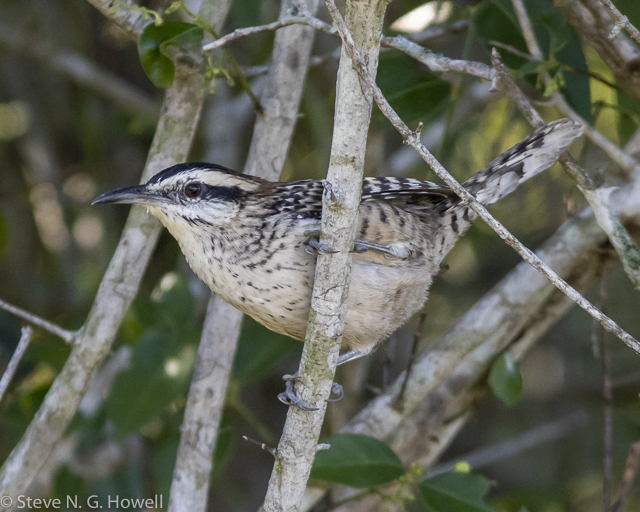
Coastal birding produced great views of the recently split Veracruz (née Rufous-naped) Wren...
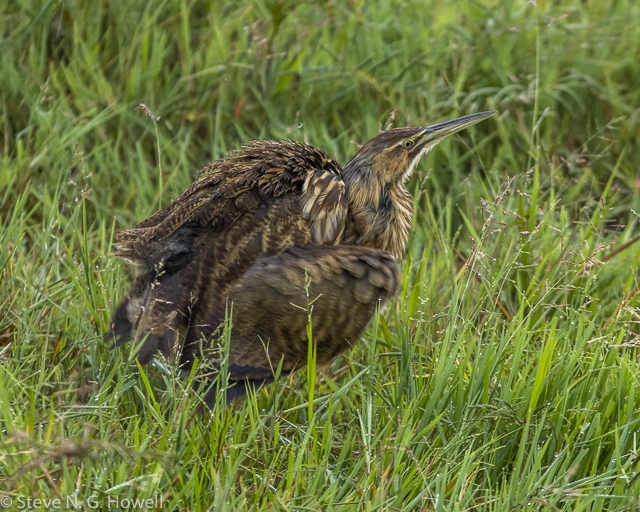
And numerous migrants, including this obliging American Bittern.
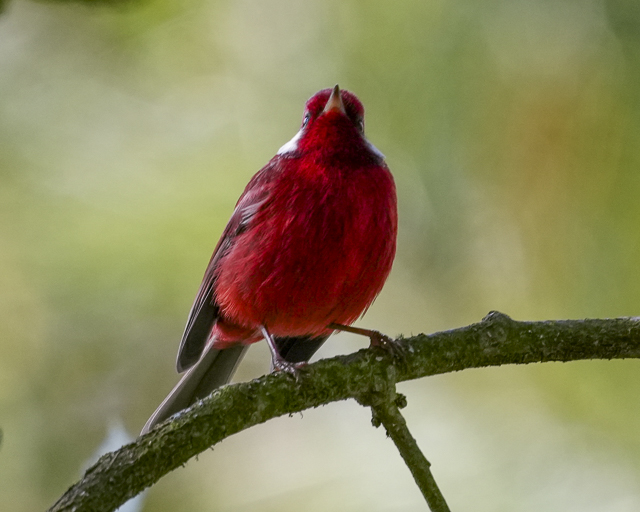
Highland birding showcased another facet of Mexico’s diverse biogeography, from the stunning Red Warbler... Photo by participant Kent Anderson
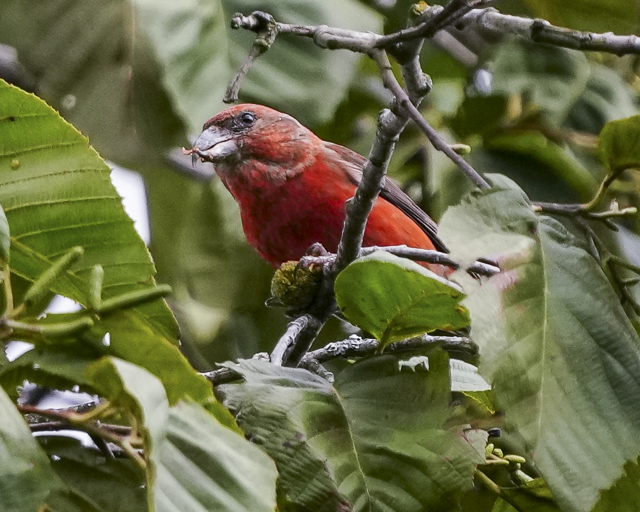
To Red Crossbills (feeding on alders!)... Photo by participant Kent Anderson
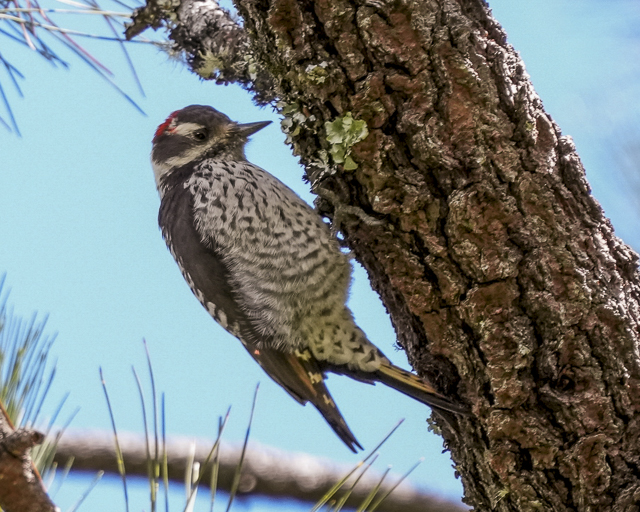
And the highly local (and tiny-billed!) Strickland’s Woodpecker. Photo by participant Kent Anderson
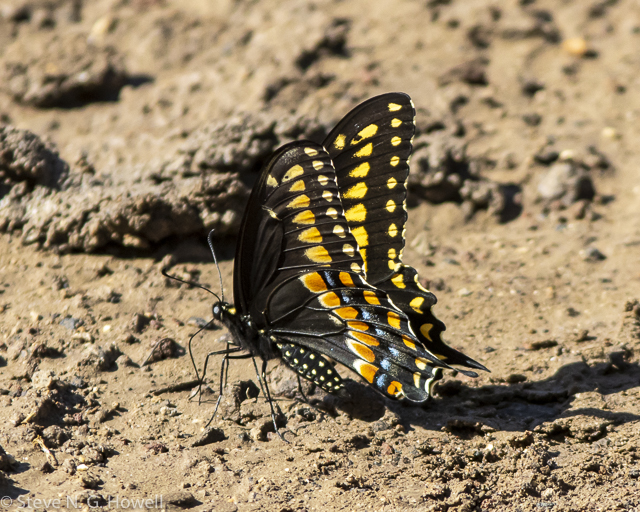
Besides birds everywhere we looked there were other delights, including this handsome Black Swallowtail
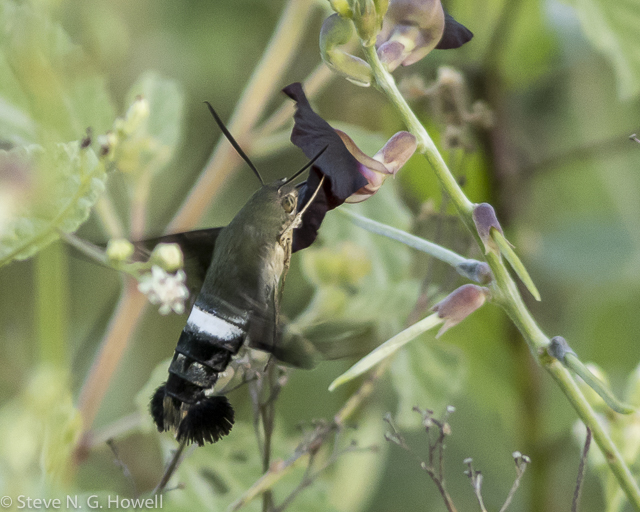
And this hummingbird hawk-moth
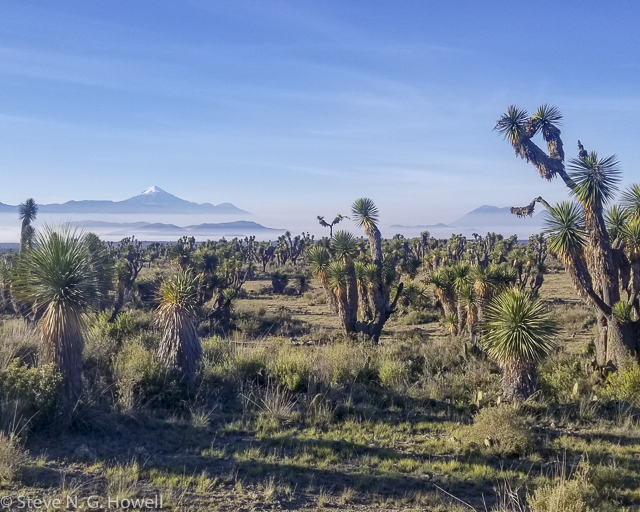
And some spectacular scenery, here high desert Joshua trees with snow-capped Orizaba Volcano in the background, towering above 18,000 feet
October 5:
Ethan Kistler reports from Madagascar
Madagascar ranks high on birders’ list of places to visit and for good reason! On this three-week tour, we visited the dry tropical forests of Ankarafantsika, the baobab-dotted spiny forest of the southwest, succulent woodlands of the interior, and lowland rainforest of the east where we targeted all of the endemic orders and families that occur on the island. We were quite successful, to say the least, having seen all of the mesites, ground-rollers, and the monotypic Cuckoo-Roller, in addition to three of the four asities, and nine of the eleven Malagasy warblers. Vangas, which are no longer considered an endemic family (recently paired with helmetshrikes and allies), were well represented with twenty species recorded. On top of this, we saw a host of chameleons and fourteen species of lemurs, from the diminutive Brown Mouse Lemur to the impressive Indri along with the iconic Ring-tailed Lemur. Overall, it was a very successful tour!
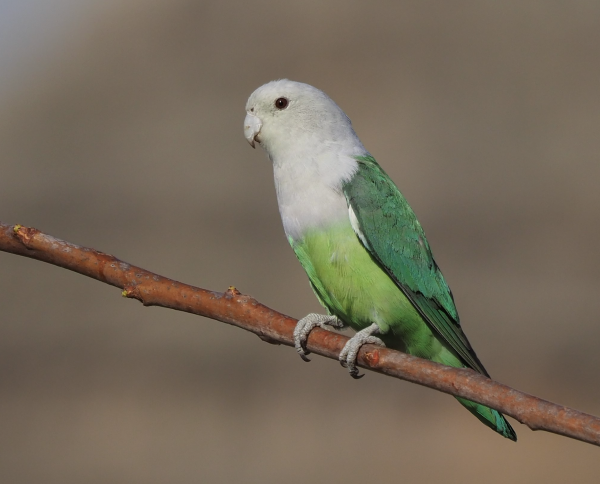
Gray-headed Lovebirds were common at our accommodation outside Isalo National Park. The Gray-headed is the only lovebird not found on mainland Africa.
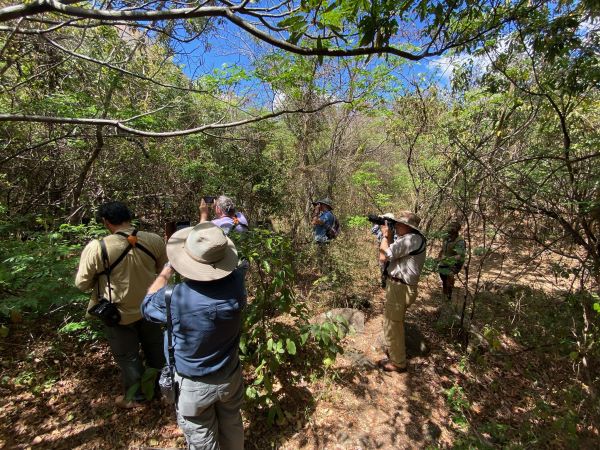
The group enjoying closeup views of Ring-tailed Lemurs.
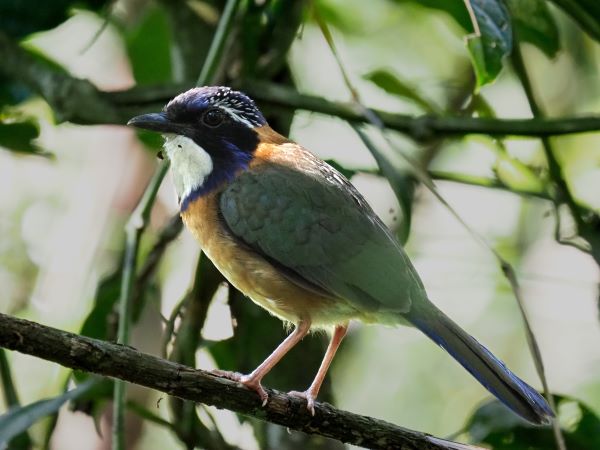
Pitta-like Ground-Roller is one of the five species of ground-rollers, an endemic family to Madagascar. We successfully completed the whole family.
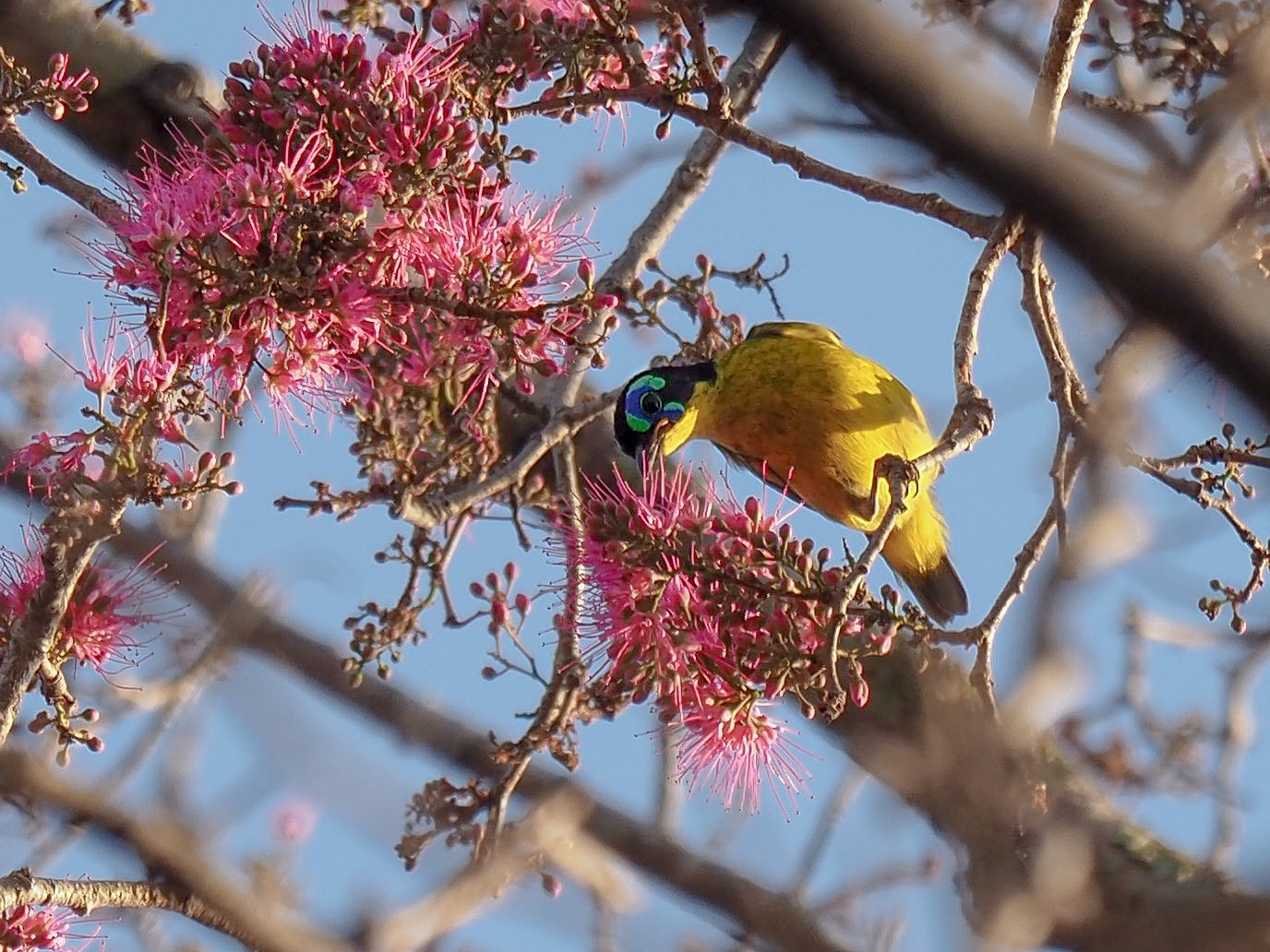
This male Schlegel’s Asity was one of several visiting a fruiting tree in Ankarafantsika.
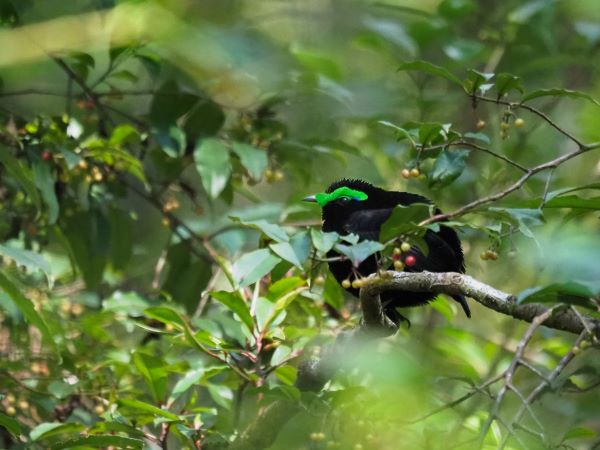
This male Velvet Asity posed nicely while a female foraged nearby.
September 21:
Rich Hoyer reports from the recent Oregon in Late Summer tour
A single morning of rain – the first here in western Oregon since early June – was actually quite the welcome change from the otherwise stunningly gorgeous weather with ideal temperatures the entire rest of this year’s Oregon in Late Summer tour. A family of Mountain Quail feeding on the shoulder of the Marys Peak Road was one of the more memorable highlights, but with nearly 240 species of birds seen in such varied habitats, it was hard to choose favorites. There was the Barred Owl that flew off the side of the road fully two miles before we got to our predetermined owling location (where we also heard Northern Saw-whet Owl). Snowy Plovers blended so peacefully with their sand dune habitat at the coast, allowing us to approach quite closely and identify one of the color-banded individuals, a three-year-old male. A stop in a lovely patch of old-growth Big Sagebrush produced a subtly beautiful Sagebrush Sparrow. And the Common Poorwill that came in so quickly and landed so close to us was quite the surprise, providing perhaps the shortest night birding foray we’ve ever done. We made productive stops for butterflies, many dragonflies and damselflies, mammals such as Bighorn Sheep and Pronghorn, and to top them all, a gorgeous Rubber Boa stretched across a remote forest service road.
We connected with all the hoped-for “rockpeckers” on the coast, including this family of Black Oystercatchers.
This American Pipit was one of the first fall migrants of its species to grace the Oregon coast this year.
Notably and eerily absent from the pine forests of eastern Oregon, these Clark's Nutcrackers were a rare showing in western Oregon on top of Marys Peak.
We glimpsed many Sage Thrashers, but just this one, our first one near Fort Rock, allowed such close approach.
We worked hard for our lone White-headed Woodpecker in the mixed conifer forests north of Burns, only to have this confiding individual at our last morning’s picnic breakfast stop far out of habitat.
One of the tour highlights was finding this charming Rubber Boa stretched out across a remote forest road.
September 18:
Jake Mohlmann reports on the recent Arizona & Utah tour:
We just finished covering 1,986 miles through some of the most beautiful scenery in the world. 193 species of birds were encountered over 13 days filled with perfect weather, endless landscapes, and a big sky easy to get lost in.
Our group in the unreal Antelope Canyon.
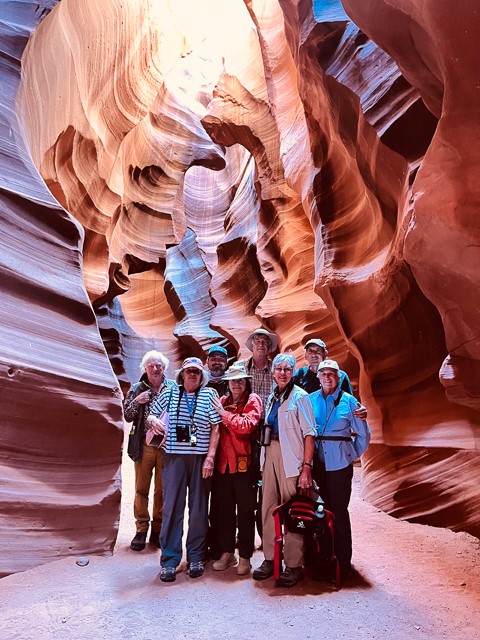
The Grand Canyon was an endless maze of gorges all combined to create a spectacle that has to be seen to believe. Our sunrise here was unforgettable.
The sun creeps up Grand Canyon’s walls at sunrise.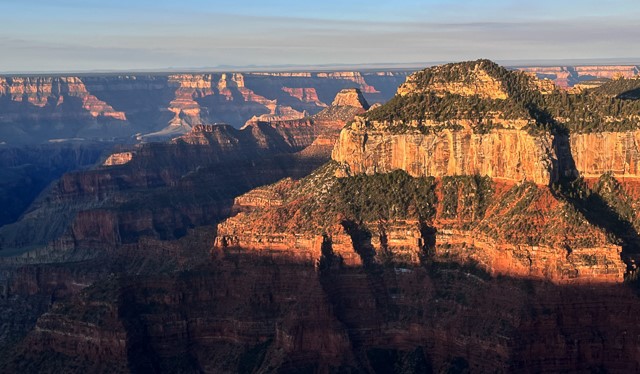
One of the highlights of the trip was getting to witness 4 wild California Condors fly through Marble Canyon just under our feet. While overlooking the Colorado River condor L4 was directly below. The peregrine fund states she was hatched in the wild on May 27th, 2011.
12 year old condor L4 was very close.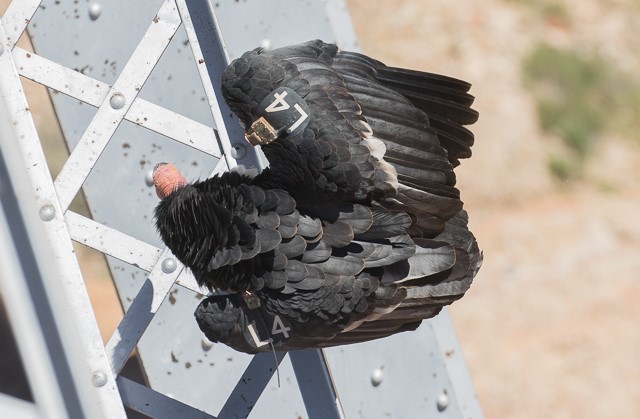
Canyon Wrens are an emblematic species for this rugged terrain. Deep canyons allow their song to echo down below, and we were lucky enough to experience them multiple days. One particularly confiding bird was posted up on top of the entrance of Boyce Thompson Arboretum.
Canyon Wren overlooking its domain.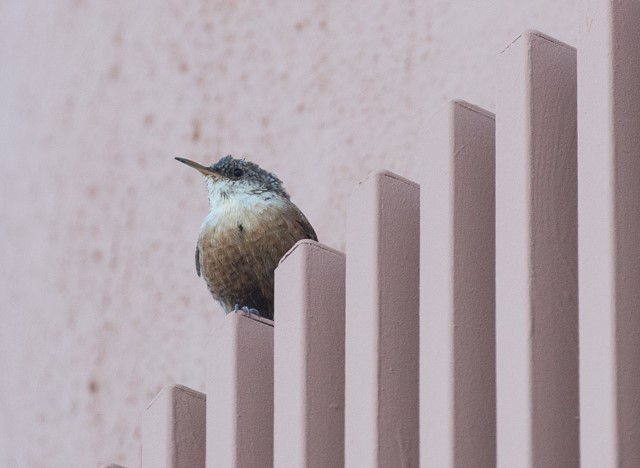
Zion National Park protects an amazing diversity of habitats across southern Utah. Not only was Zion Canyon breathtakingly beautiful, but also provided a very close encounter with a bird that calls these areas home. On the rocky banks of the Virgin River we had an American Dipper comfortable enough to approach us to within a few feet. We couldn’t believe our luck as we got to watch it hunt for, catch, and consume a tadpole.
American Dipper hunted for food within feet.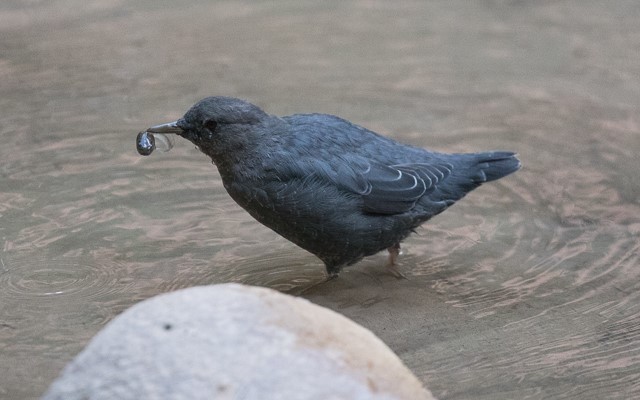
At Canyon de Chelly the soaked skies wrung out in a deluge of rain. So much rain fell that various waterfalls began forming, and pouring down from the towering 1,000 foot cliffs to the valley bottom below. The timing has to be just right to witness something like this so we all felt lucky to have seen this spectacle.
Waterfalls toppled over the Canyon de Chelly cliffs.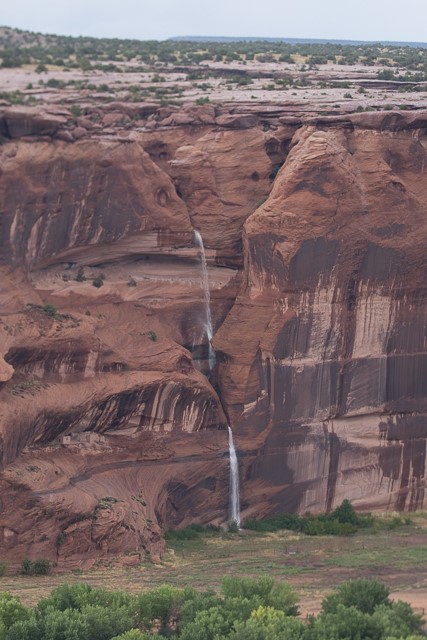
Monument Valley is world famous and the setting for countless western movies. This year the conditions were perfect for seeing the west mitten cast its shadow across the face of the east mitten. A great way to end our day!
The mittens of Monument Valley at sunset.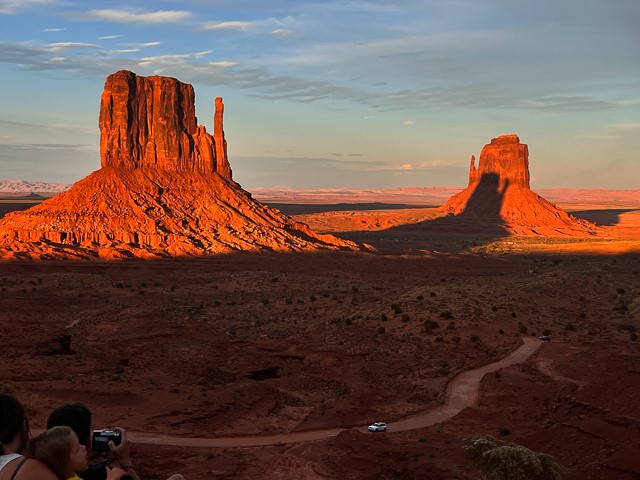
September 14:
Rich Hoyer reports from the Oregon: Birds & Theater tour
For such a short, compact tour, we packed it in – great birding in with gorgeous scenery, terrific restaurants with delicious variety, and of course some top-notch performances by the Oregon Shakespeare Festival all combined to make this a memorable tour. Though evenings were usually very smoky from distant forest fires in California, our birding up in the mountains was in fresher air, and the side trip to the Klamath Basin and Crater Lake National Park was simply perfect. Owls and woodpeckers were a recurring theme, with Barn Owl, Northern Pygmy-Owl, Acorn Woodpecker, and White-headed Woodpecker among the top five favorite birds. We were surprised by two Ruffed Grouse in the road one morning, which also received multiple votes. Because of the smoke, we missed the two performances in the outdoor Elizabethan theater, but the three we saw indoors were outstanding, with Where We Belong on its opening night a favorite for most of us – even though the only Common Grackle we would see during the tour was on its promotional poster.
This pair of Barn Owls in the welded tuff formation known as the Petroglyph Cliffs was a tour highlight for many.
The Rogue Valley is home to many Acorn Woodpeckers, and at TouVelle park we enjoyed watching them at one of the best-known examples of a granary tree.
On our first morning we spent some time calling in this Northern Pygmy-Owl, which came out of hiding not far above eye level.
Though migration for some is well underway, many birds were still on territory, such as this MacGillivray's Warbler.
We enjoyed several picnics in beautiful settings.
August 7:
John Muddeman reports from the Canary Islands
The much older semi-desert eastern islands of Lanzarote and Fuerteventura complement one another: the lovely white towns and villages of Lanzarote with their black and orange lava fields and the innumerable walls, hand-crafted for agricultural reasons over generations contrasted with the more haphazard development on well-watered Fuerteventura, an island that is now exclusive home to the endemic Fuerteventura Stonechat, which we saw extremely well at two different sites. The semi-deserts were all particularly dry this year, but still yielded two separate Houbara Bustards at point-blank range striding sedately off over the plains, flocks of Black-bellied Sandgrouse bubbling as they flew over to drink and then dash back to the plains, Saharan sand- and not Cream-coloured (!) Coursers racing through the dunes, a fine flock of large-eyed Stone-curlews roosting surprisingly close to a village, coveys of nervous Barbary Partridges, and even a fine roving flock of furtive Mediterranean Short-toed Larks, which outside the breeding season can be surprisingly hard to find. A few Trumpeter Finches, including adults were still feeding young in one area of vineyards, ‘chipping’ Berthelot’s Pipits were widespread, while local Kentish Plovers were the star among a few common waders and gulls at different coastal sites and Salinas. Excellent numbers of Cory’s Shearwaters were encountered on the return ferry journeys between these two islands, while our very first stop on Lanzarote even revealed a few Atlantic Canaries, very localised on the island, in addition to degener African Blue Tits and secretive Spectacled Warblers.
The two main central islands displayed greater diversity than the dry eastern ones. Gran Canaria yielded its critically endangered Blue Chaffinch, as well as single-island races of Great Spotted Woodpecker, African Blue Tit and Canary Islands Chaffinch –a very recent, but long-awaited split from European Chaffinch– in the hot Canary Pine forests near its summit. Numerous Gran Canaria Robins (a mooted split from European Robin and also from Tenerife Robin following recent research!) certainly performed and enabled us to both see and hear them well, much to our delight! The first of numerous Canary Islands Chiffchaffs sang their jumbled songs just about everywhere we stopped and Plain Swifts were far commoner than to the east, even if we had seen ones and twos cruising at head height low through the streets in Lanzarote!
The more wooded island of Tenerife, thanks to the forest crown of Canary Pine and some large patches of laurel forest bathed by the mist brought in on the trade winds, also gave up a few of its treasures. Laurel and Bolle’s Pigeons both gave good views, even if we had to work harder for them than normal, while the island races of both Canary Islands Chaffinch, Great Spotted Woodpecker and also the confiding Tenerife Blue Chaffinch were in much greater abundance than their counterparts on Gran Canaria, albeit reliant on the presence of water. A couple of diminutive “Tenerife” Goldcrests showed well, one even singing for us, and though the Tenerife Robins were rather uncooperative, we all finally managed to see one, even though they weren’t singing. Seawatching here provided us with a few Bulwer’s Petrels and a single Barolo’s Shearwater amongst the ever-present Cory’s.
Add to all this a surprise Northern Gannet, a vagrant Lesser Scaup, various “Barbary” (Peregrine) Falcons at several sites, Eleonora’s Falcons coasting overhead into the low cloud on Lanzarote, Pallid Swifts, a couple of Laughing and several European Turtle Doves, fly-over granti Eurasian Sparrowhawks, mewing insularum Common Buzzards, raucous koenigi Great Grey Shrikes, subtle local races of Eurasian Blackcap and Sardinian Warbler, small numbers of Spanish Sparrows and even last-minute Black-crowned Night-herons and Grey Wagtails, and there was something new to see, and look for, throughout!
Finally, It certainly wasn’t all just birds. Atlantic and Tenerife Lizards, flying fish from the Playa Blanca ferry, a few butterflies including a surprise male Tenerife Brimstone, a few Canary Speckled Woods and Monarchs, Epaulet Skimmer and Red-veined Dropwing amongst the dragonflies and, at the shore, numerous impressive fish including colorful wrasse and Canary Damselfish and the Atlantic Lightfoot Crab all added to fantastic visit to the Fortunate Isles. And of course, the ancient volcanic cones and lava flows of Lanzarote and colorful rolling mountains of Fuerteventura, rugged vegetated slopes of Gran Canaria and finally the impressive Teide peak and caldera provided excellent contrasts and context to the birding.
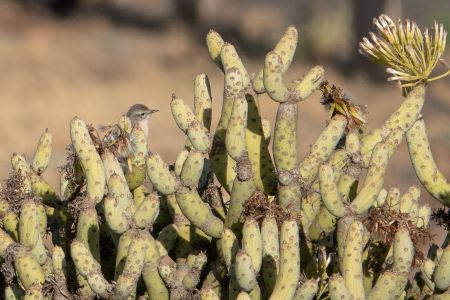
Fuerteventura Stonechat
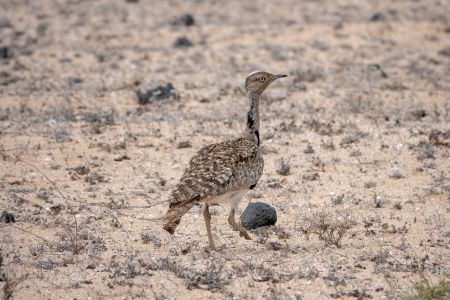
Houbara Bustard
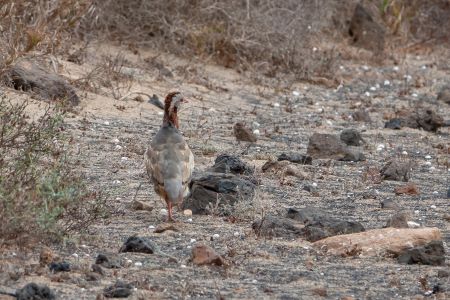
Barbary Partridge
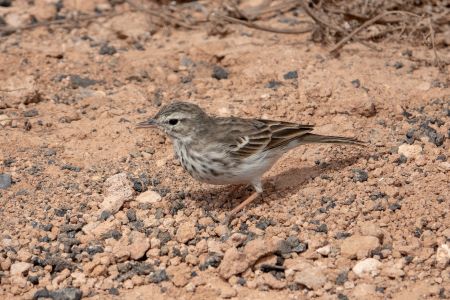
Berthelot’s Pipit
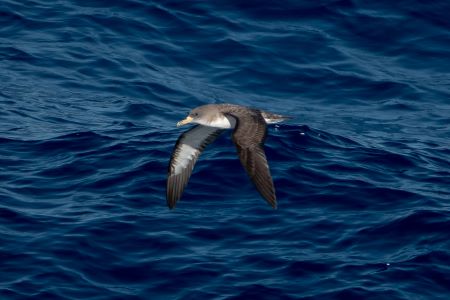
Cory's Shearwater
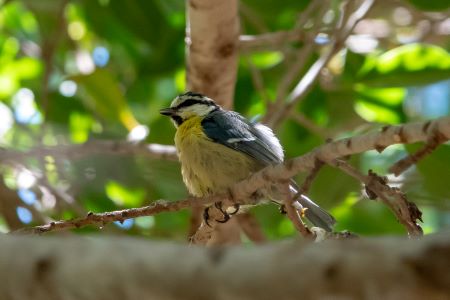
African Blue Tit
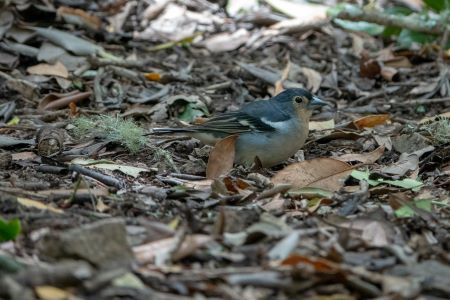
Canary Islands Chaffinch
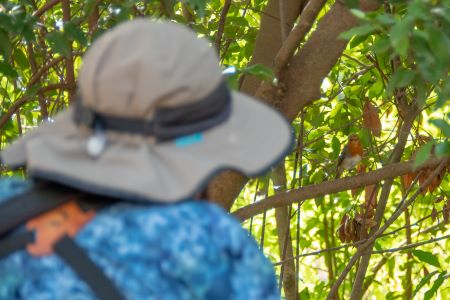
Gran Canaria Robin
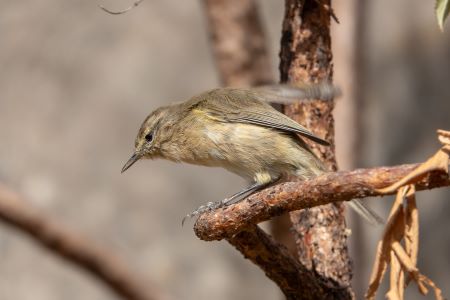
Canary Islands Chiffchaff
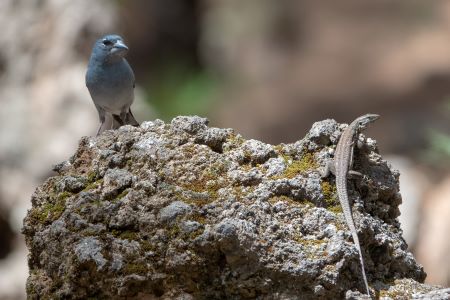
Tenerife Blue Chaffinch & Tenerife Lizard
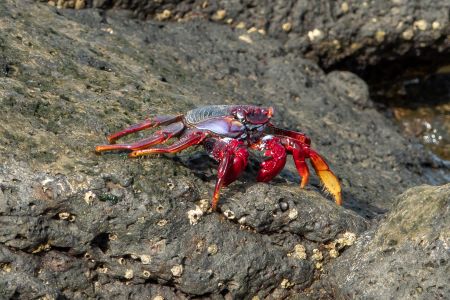
Atlantic Lightfoot Crab
July 26:
Rich Hoyer has recently returned from Brazil
So many species, so many highlights, and so many wonderful memories were the result of this year's Marvelous Mato Grosso tour. For some, more than half of the over 500 species of birds we saw were lifers, while for others some exciting milestones were reached – 2000 for Dan Toweill and 6000 for Cathy Pasterczyk. Memorable bird sightings in the Chapada dos Guimarães National Park, where we started the tour, included Dot-eared Coquette, a very rare Chaco Eagle, our first of many handsome King Vultures, and amazing Red-legged Seriemas (the latter receiving many votes among the tour’s favorites).
We then moved on to Cristalino Lodge in the Amazonian north of the state, where the hands-down favorite of the tour was the Harpy Eagle perched quietly in a tree less than 50 meters from where we first had been distracted by a mob of tanagers, tyrannulets, flycatchers, and hummingbirds. We watched it for over 15 minutes, admiring it’s bushy crest and short, massively thick legs. Though jungle birding can be difficult, most of the tour’s favorites were at Cristalino – the Bare-eyed Antbirds at the bird bath; the Pompadour Cotinga and Curl-crested Aracaris from the towers; Eastern Striolated-Puffbird and White-necked Jacobin on the Serra; and the Bare-faced Curassows wandering the grounds near our rooms.
We saw some wonderful birds in the Pantanal as well, such as Southern Screamers with chicks, several Green-and-rufous Kingfishers, and the incredible Hyacinth Macaws, the latter a close second-favorite bird of the tour. But the Jaguars certainly stole the show this time, with eight unforgettable animals. It helped that we had a super skilled boatman named Marcelo Arruda, who also had sharp eyes for spotting large cats on the bank. Our group was the first to get photos of Ibaca’s second cub from last fall (it was thought that she had only one), so we got to name it – and we chose Ipepo, the Guaraní word for “wings.” But we also watched the rarely-seen event of a six-year-old Pixána catch a capybara; her 22 seconds under water has us filled with suspense and wonder. And then the finale was noticing two-year-old Kasimir only when he leapt up out of the water onto a fallen tree that was only 10 meters from our boat. Our second tour last year saw him with his brother and mother, over 12 miles away, so it was great to see him again, having set out on his own.
We finished the tour by adding another 70 species of birds in Misiones, Argentina, but the sight and sound Iguazú Falls after a period of heavy rains upstream was most impressive. The water flow was about three times average, and we had the great fortune of being there at the right time before an approaching cold front to watch an estimated 20,000 Great Dusky Swifts gather and disappearing behind the falls for their nightly roost. It was an unforgettable experience.
A pair of Red-and-green Macaws foraged on a small fruiting tree by the roadside in Chapada dos Guimarães.
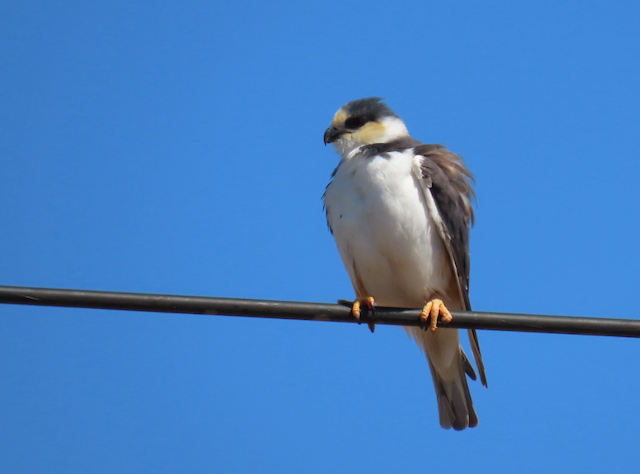
Pearl Kite is not seen every year, so we were pleased to have seen eight individuals in the first three days of the tour.
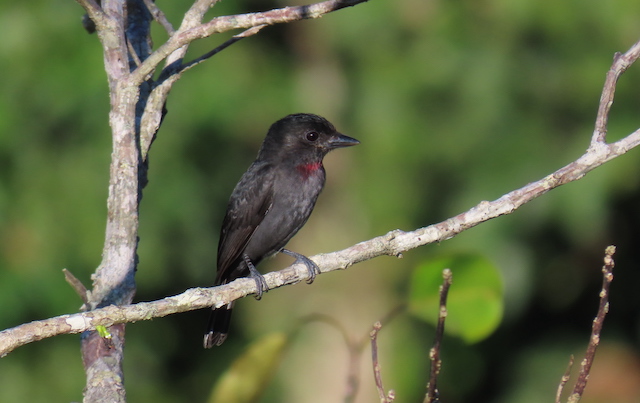
A Pink-throated Becard at what seemed like arm’s length was possible only from our perch atop one of Cristalino’s two tours.
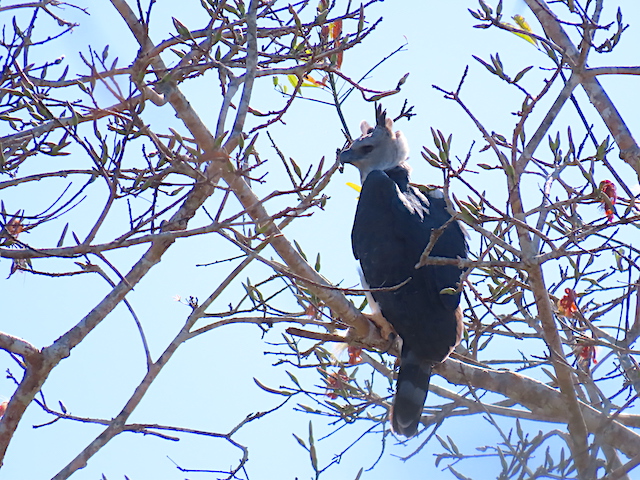
This Harpy Eagle was spotted because participant Stef McLaney looked in the opposite direction from the group of tanagers and flycatchers the rest of us were watching.
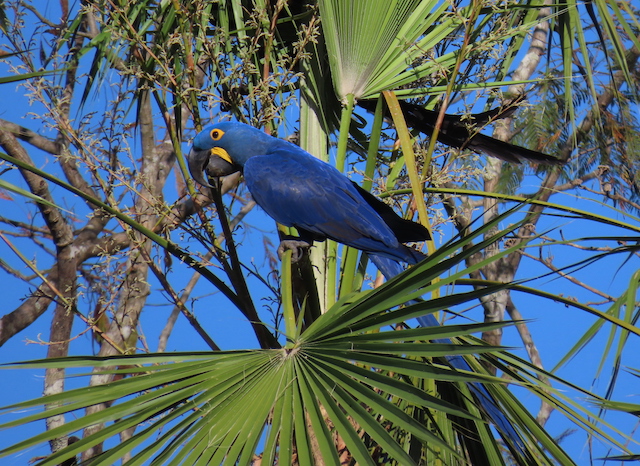
The size and blueness of Hyacinth Macaw has to be seen to be believed.
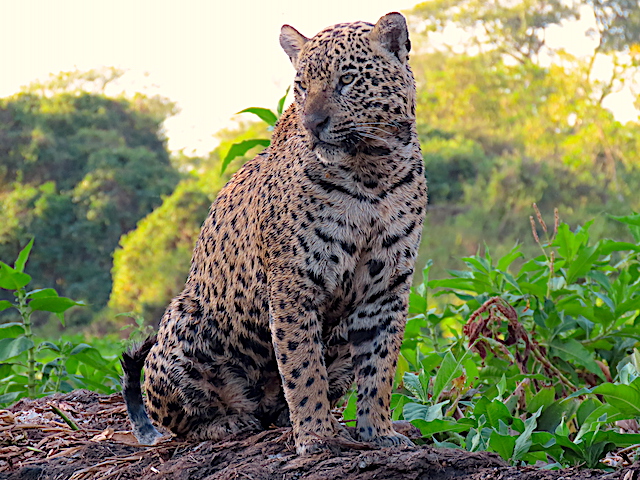
This handsome devil is Kasimir, seen for the first time on his own territory away from his brother and mother.
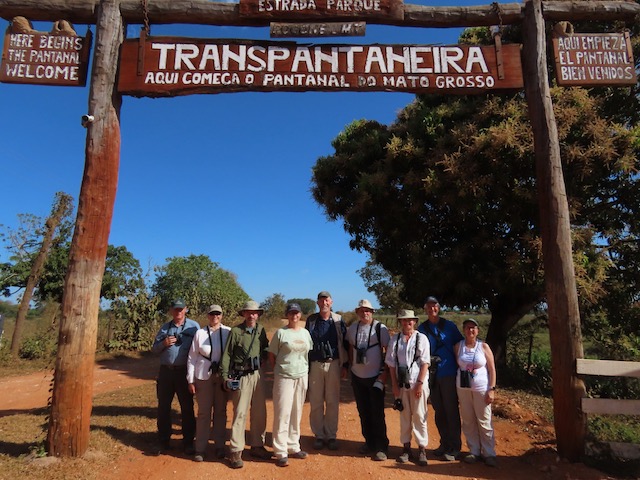
A very happy group after our time in the Pantanal.
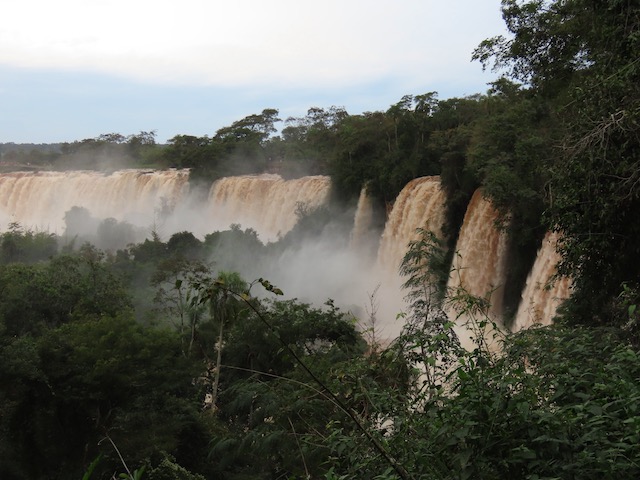
Most of the group continued on the extension to witness the marvelous Iguazú Falls during a high water event.
July 3:
Jake Mohlmann and Raymond Vanbuskirk recently completed their Alaska Majesty tour
We just completed an amazing trip all over Alaska on our WINGS tour. Around Anchorage, woodpeckers were in good supply and we enjoyed witnessing a pair of adult American Three-toed Woodpeckers bringing in food to their begging young chattering from a perfectly sculpted nest hole. Nearby an even scarcer Black-backed Woodpecker came in for close inspection, 1 of 3 encountered this year.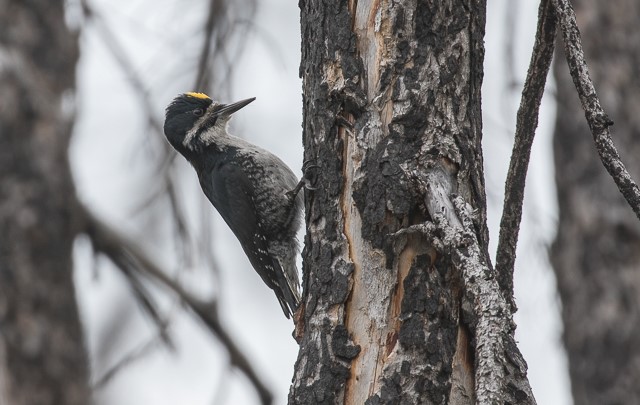
We found a high count of three Black-backed Woodpeckers this year.
In Fairbanks we were treated to a couple of very rare sightings that included two different nesting owls. We observed two inquisitive fluffy young Boreal Owls peeking out of a nest box, soon to be followed by scope views of an adult Northern Hawk Owl perched within sight of its nest holding 6 hungry chicks.
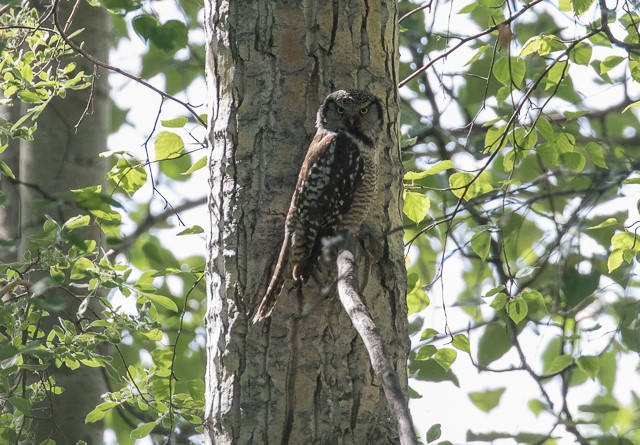
This adult Northern Hawk Owl was in direct sight of its nest with 6 young.
Bird highlights in Nome included but were not limited to insanely good views of Bristle-thighed Curlew. Some years the trek to see these endemic breeders can be downright grueling, but this year one of them walked right across the well-beaten path much to the delight of our beating hearts. Willow Ptarmigans were abundant along roadsides including this dapper male grunting away uninhibited by the close proximity of our vans.
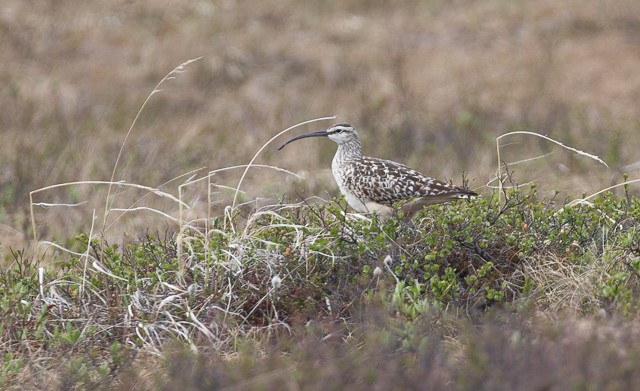
A Bristle-thighed Curlew seen well on its remote breeding grounds.
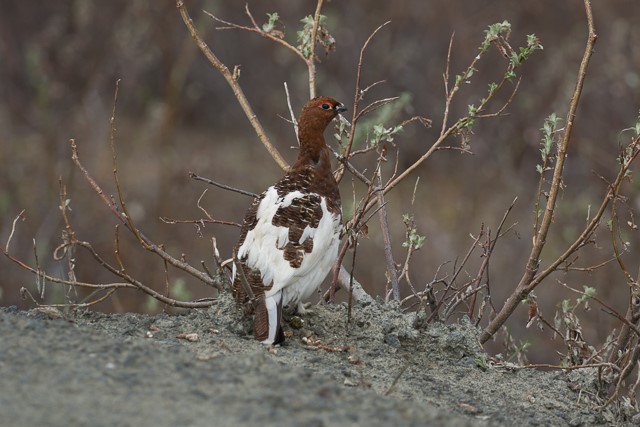
Male Willow Ptarmigan were seen quite close along roadsides.
Our boat trip in Seward was packed in with fog and rain was abundant, but this didn’t hamper our abilities to see many of the sought after seabirds. One highlight from the cruise was getting extremely close to a pair of Kittlitz’s Murrelets feeding in a glacial fjord.
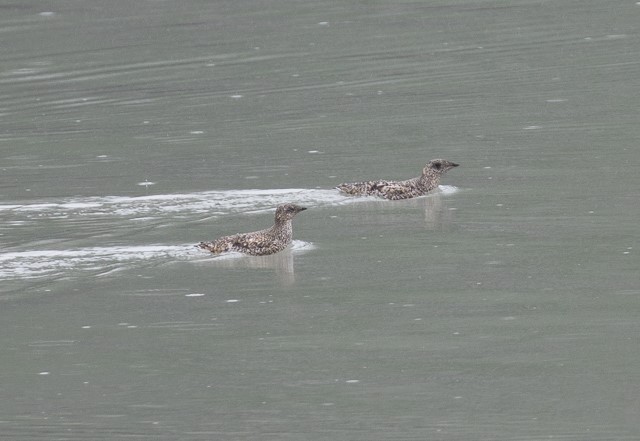
A close pair of Kittlitz’s Murrelets outside Seward.
A truly unbelievable experience unfolded in Utquiagvik this year. We arranged an early morning trip to the northernmost point to try our luck with finding some of the Polar Bears others had been seeing and we were blown away by the experience we had. As we were deflating the tires on the vehicle a huge female bear appeared from the depths of the surrounding ice fields with a cub in tow. They made their way surprisingly fast to a pile of whale parts on the beach and gorged while we sat in awe (and safety) of our tundra-equipped vehicles.
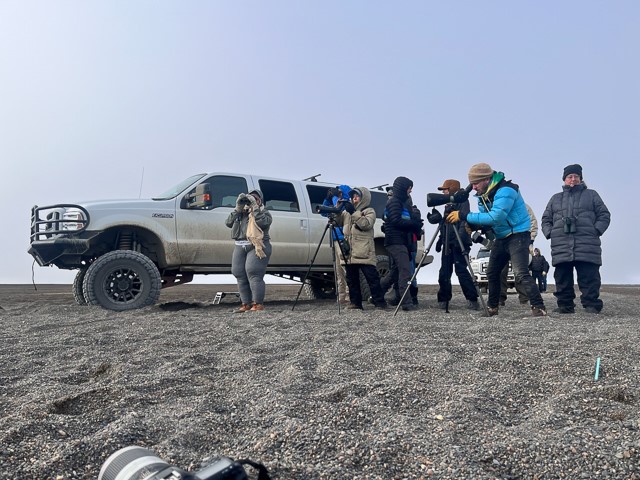
The group watching Polar Bears at Point Barrow.
These are two of the twelve Polar Bears we saw on our special trip to the Northernmost Point of the United States. This female with cub in tow crossed the road up ahead of us eventually allowing close approach to observe them feed on whale parts thrown out by the locals.
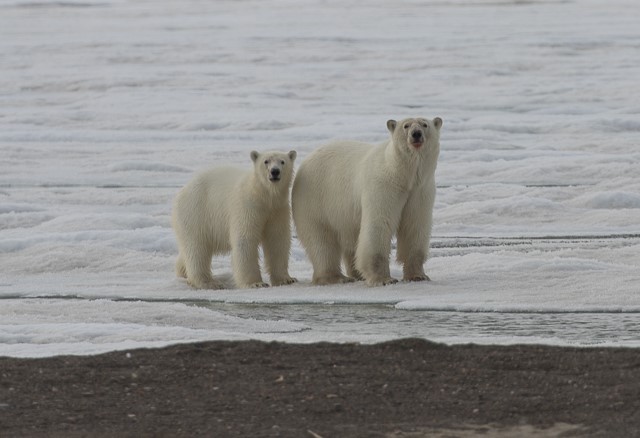
A female Polar Bear with cub feeding close by.
King Eider was a major highlight from the tundra surrounding Utquiaqvik. We watched a bunch of gaudy males courting hens in one pond while having a picnic lunch, truly a memorable experience. The colors of these birds popped nicely in the never-ending light at the end of the world.
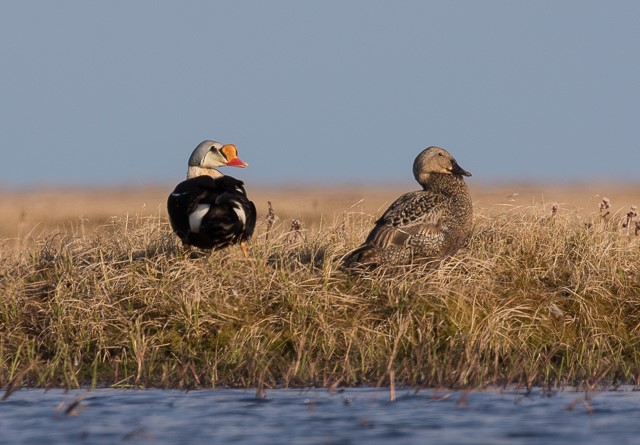
A King Eider pair rest after a day of courtship and feeding.
Mammal viewing is also great in Alaska and this year provided a suite of hairy critters to distract us. A new mammal for most was the muskox. After we watched a Gray-tailed Tattler fly from the mouth of Hastings Creek in Nome off into oblivion, this group of Muskox were seen on the hillside silently observing the scene.
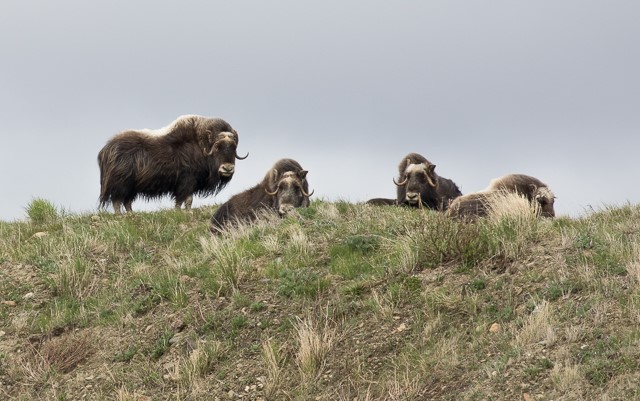
The always observant Muskox in the Nome surrounds.
June 27:
Paul French and WINGS have returned to Mongolia
Our 14th tour to Mongolia (and first since the pandemic) was a great experience, with a wonderful selection of desert, steppes, wetland and taiga species. Everyone has their own highlights of course, whether it wasthe displaying Oriental Plover, the surprise Relict Gull, the too-close-to-focus-on Black-billed Capercaillie, the much-wanted Hodgson’s Bushchats or something much more unexpected such as the incredible Pallas’s Cat that sat within a few yards of us. No one saw that coming! The sheer number of wetland birds is always a pleasure, whether it be the dancing flocks of White-winged Terns or the good looks at many of the shorebirds including five Asian Dowitchers and a pair of Tibetan Sand Plovers. We not only got to experience an amazing slice of nature, but by camping out in the wilds (both under canvas and in Ger camps) we became part of it. Mongolia always delivers some great birding in some spectacular scenery.
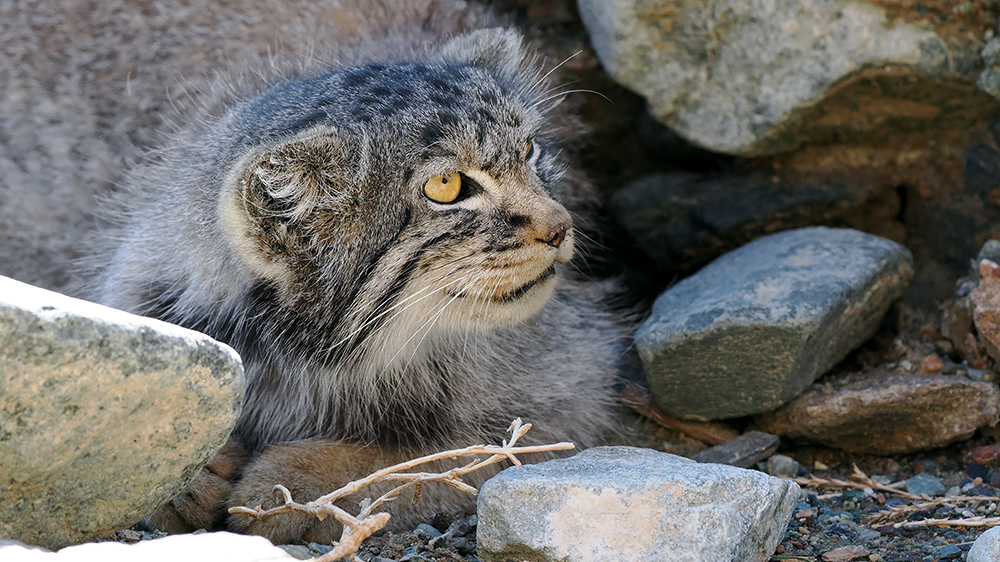
Pallas's Cat
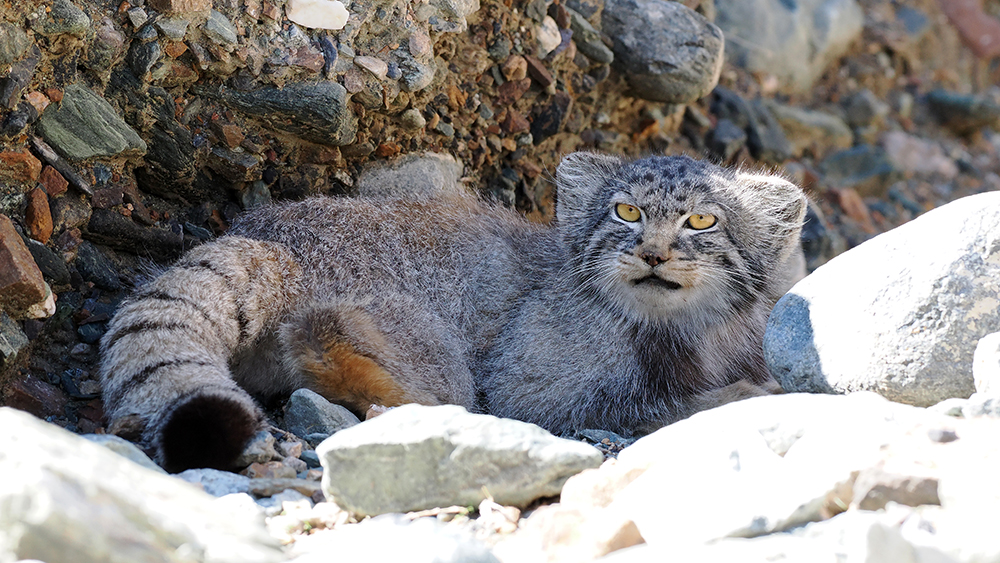
Pallas's Cat
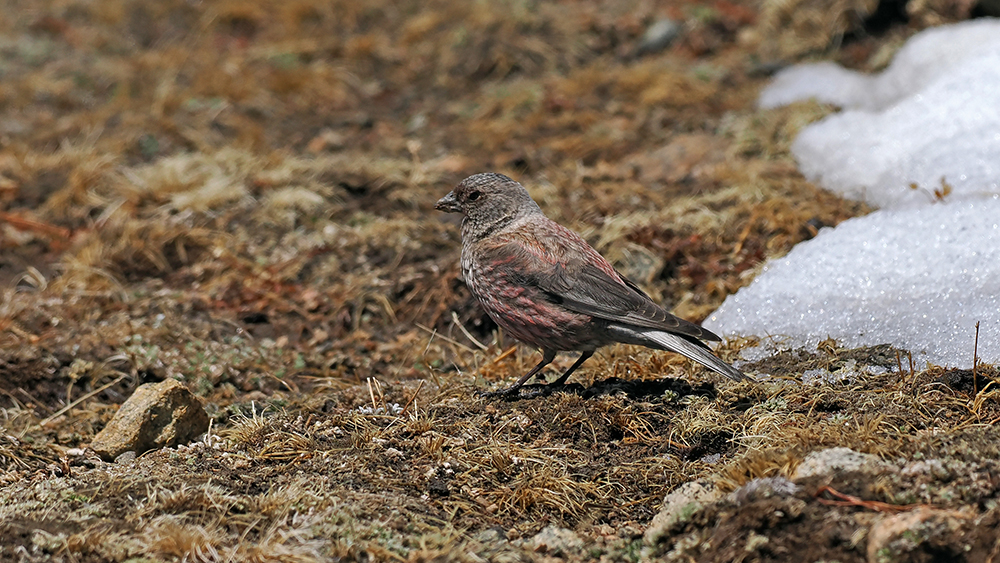 Asian Rosy-Finch
Asian Rosy-Finch
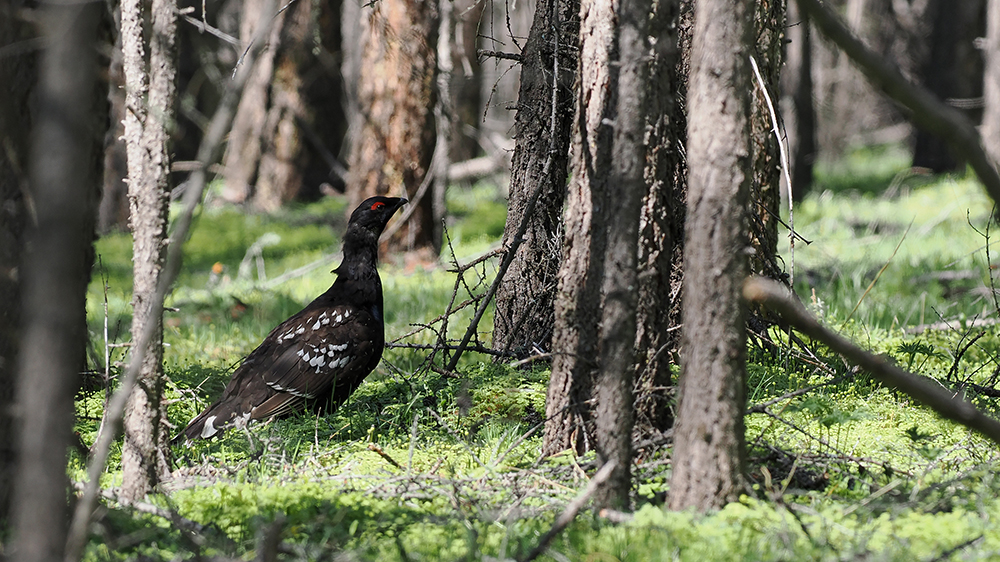
Black-billed Capercaillie
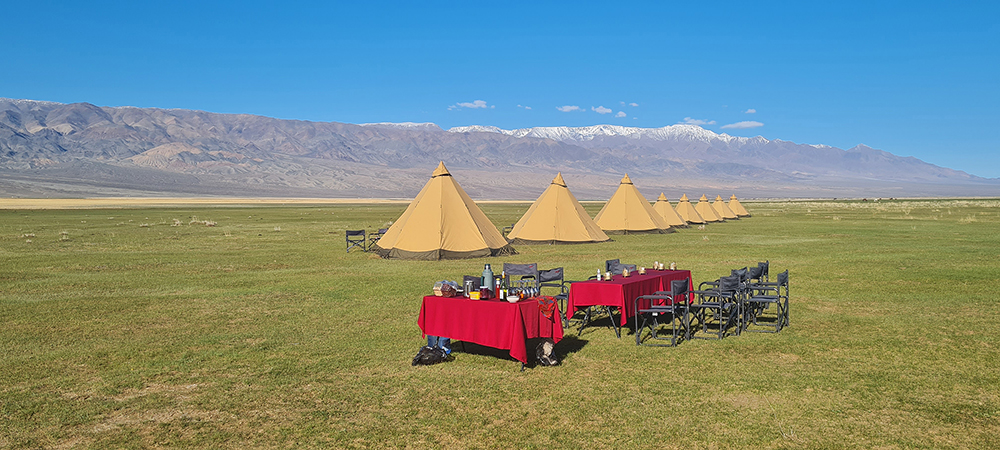
Camp at Orog Nuur
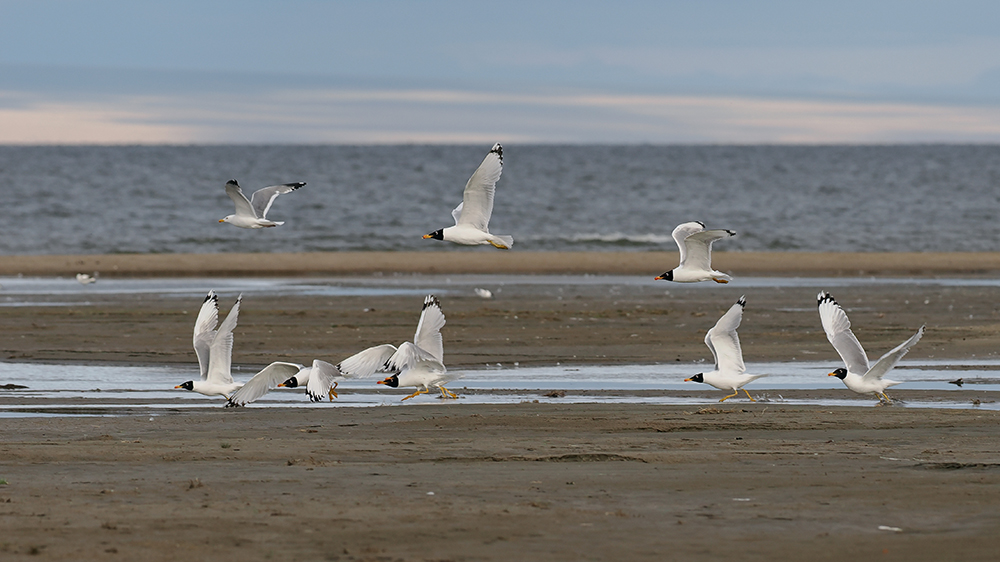
Great Black-headed Gulls
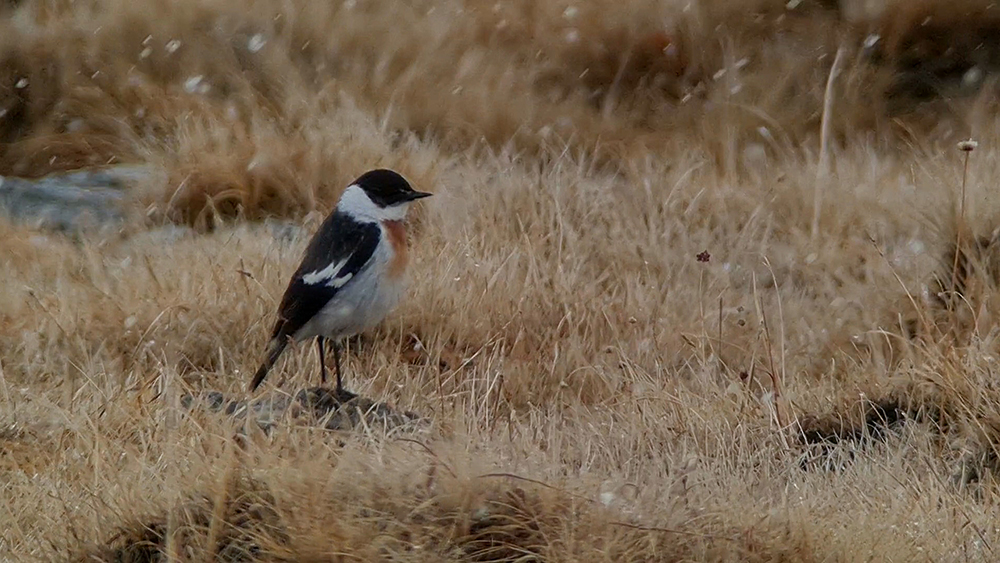
Hodgson's Bushchat
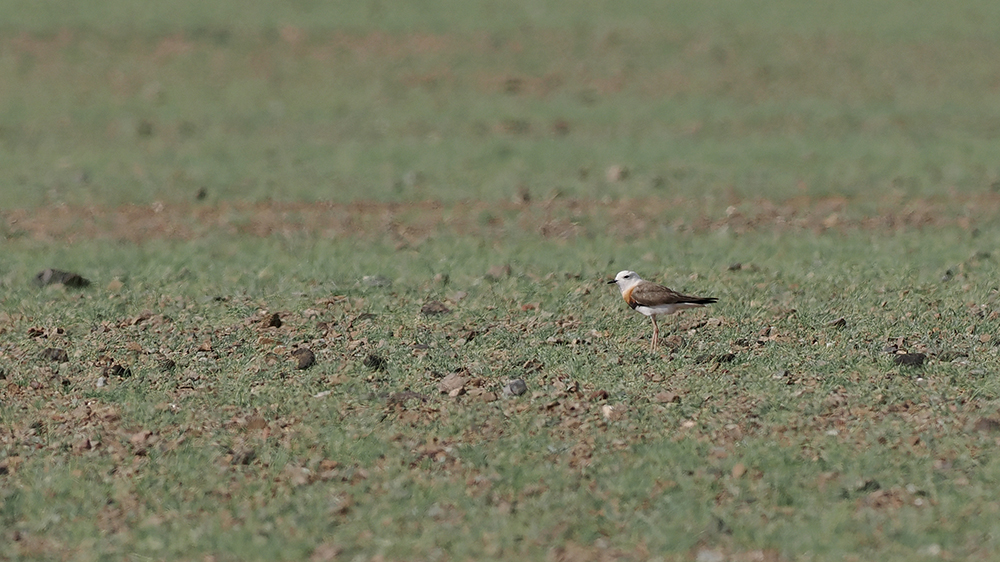
Oriental Plover
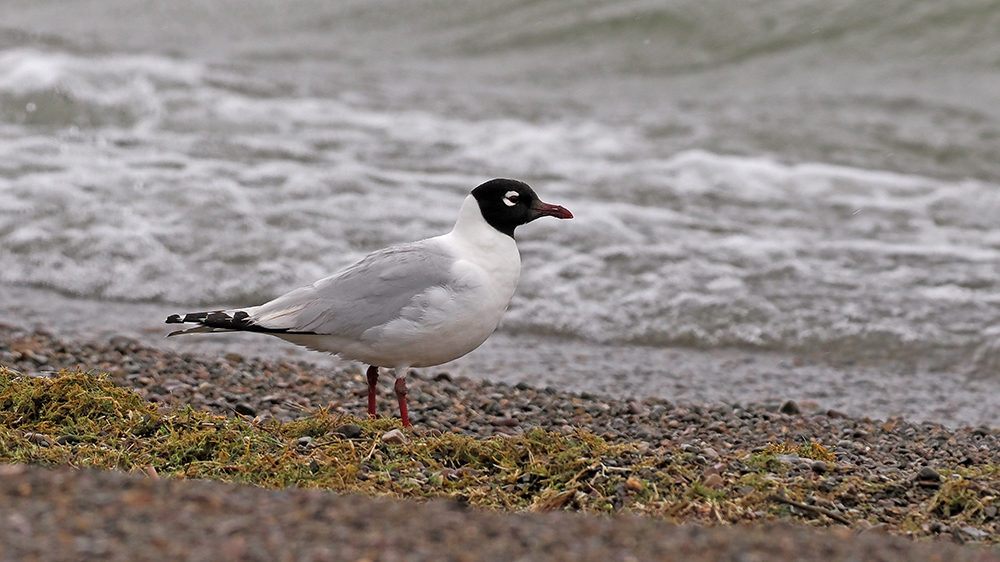
Relict Gull
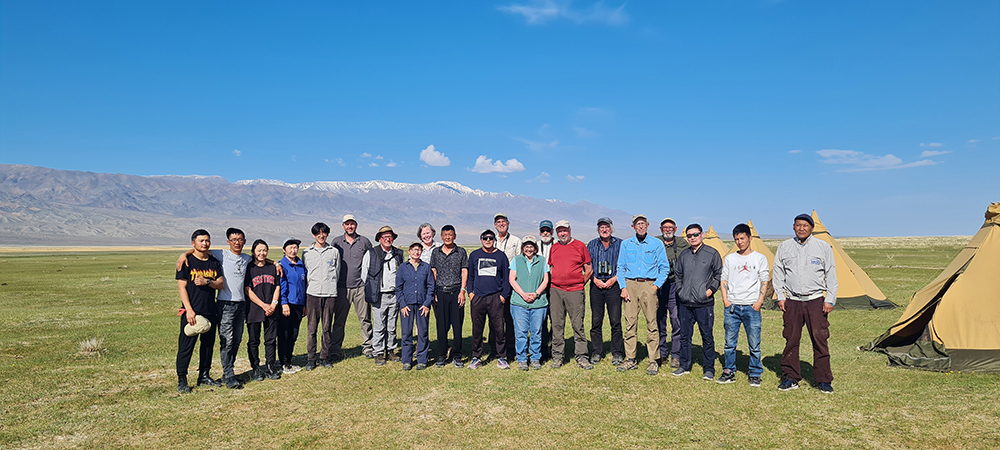
Group with drivers and guides
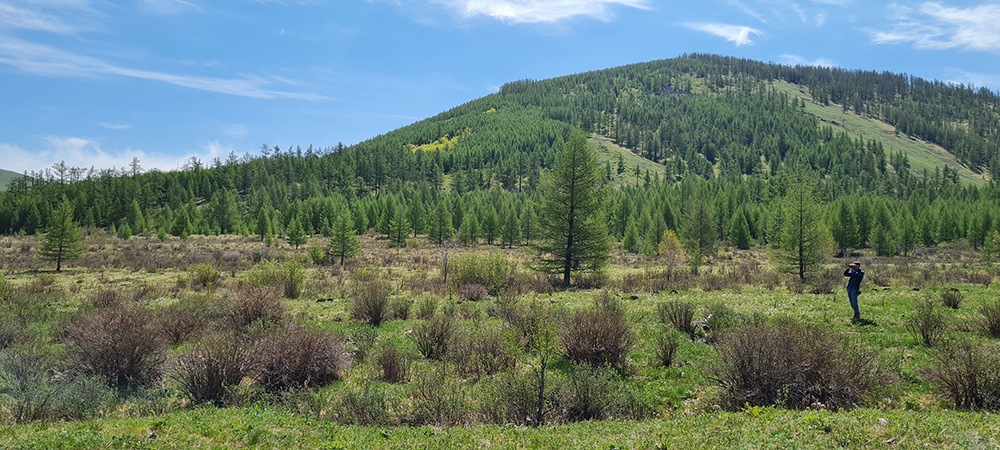
Will Russell in habitat
June 7:
Rich Hoyer reports from Oregon in Spring 2023 tour
Our fabulous drive though the diverse corners of Oregon (covering over 2000 miles in 10 days) coincided with the most perfect stretch of weather imaginable. Never too cold, never hot, never too windy – just as Goldilocks ordered. We saw some wonderful birds and scenery along the way, with picnic lunches every day in idyllic settings. Among the 226 species we saw and heard, owls (six species), woodpeckers (11 species), and daytime raptors (14 species) stood out among the highlights. Favorites also included Mountain Bluebird, Sandhill Crane, Clark’s Nutcracker, and Black-billed Magpie east of the mountains, while on the coast we saw Tufted Puffin at two of their few breeding colonies, Brandt’s Cormorant in their full breeding colors, Wandering Tattler, and Rhinoceros Auklet. (Photos by Rich Hoyer and participant Lori Herfurth.)
Any stop in the Crooked River canyon is scenic, and at some we saw Rock Wren and White-throated Swift.
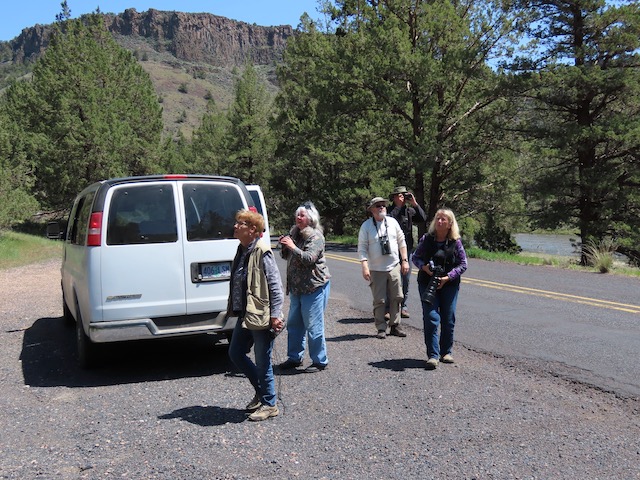
A wetter than normal winter, followed by a warmer than usual mid-May meant that the timing was perfect for a spectacular wildflower show in the Great Basin.
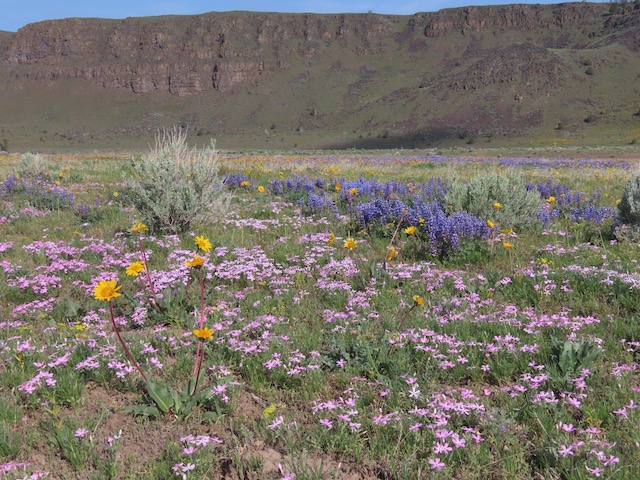
This is one of three families of Great Horned Owl that coincided with our route.
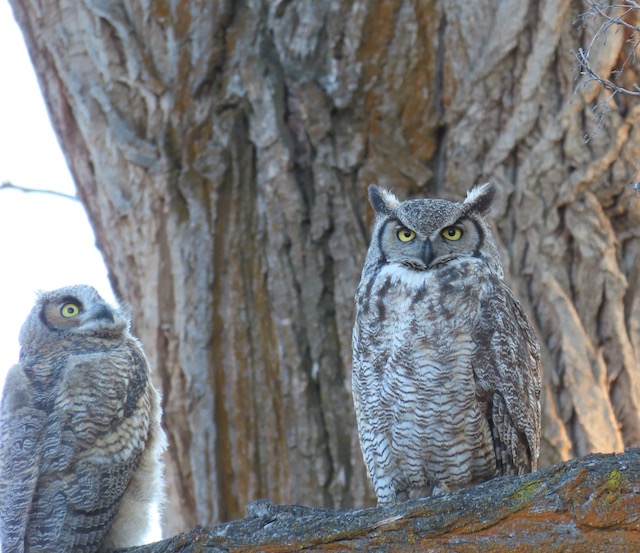
We went owling on a few nights, and on our first night we had spectacular views of this Northern Saw-whet Owl.
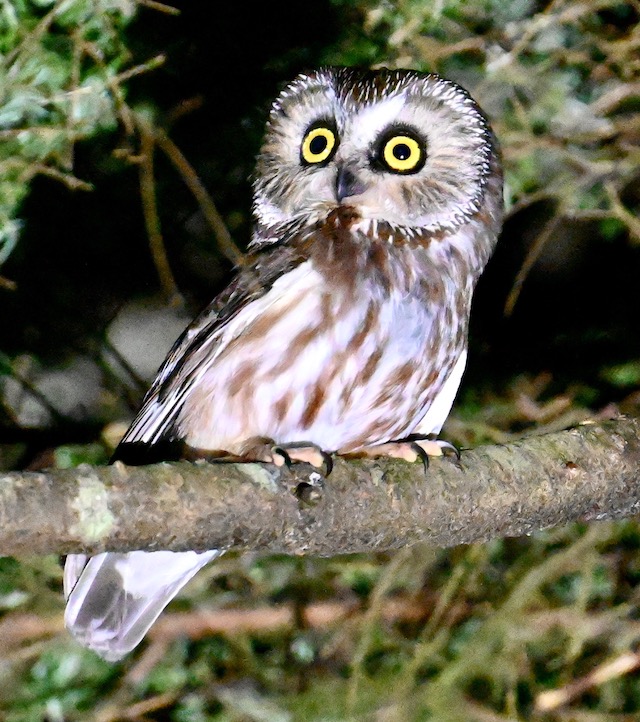
The aptly named “Raptor Alley” stretch of Highway 78 southeast of Burns delivered as promised, this cooperative Prairie Falcon a good example.
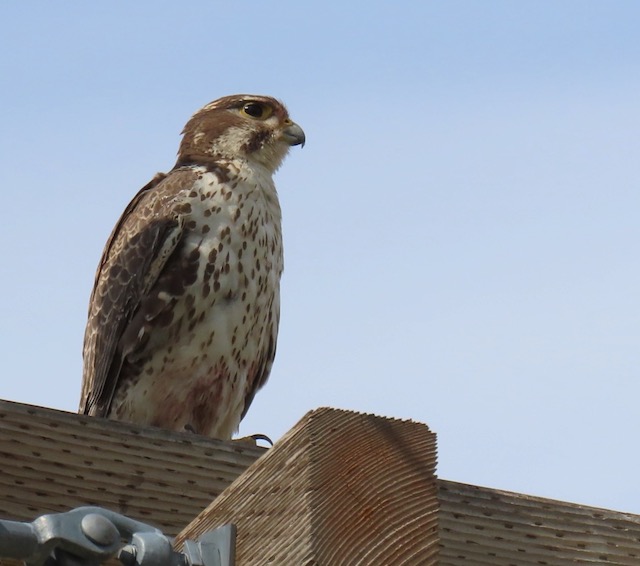
We saw many stunning Mountain Bluebirds in the more open areas of eastern Oregon.
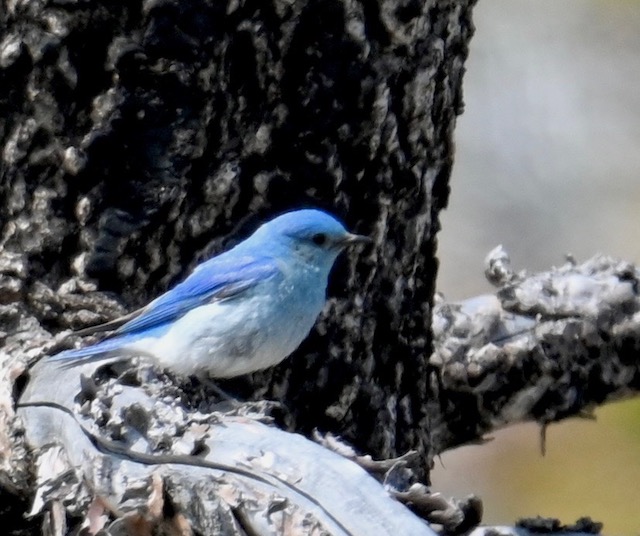
The Malheur National Wildlife Refuge and the Silvies River meadows south of Burns were home to several pairs of Sandhill Cranes. Many lone birds indicated that eggs were still being incubated.
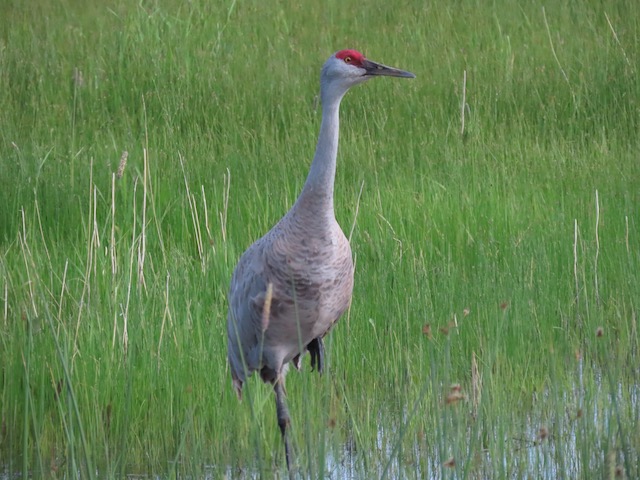
Of the nearly 30 species of mammals we tallied, this American Badger by the roadside was the biggest surprise.
